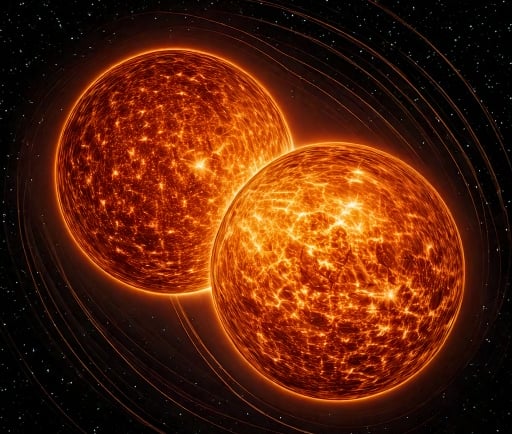2M 1510: A 90 Degree Orbit Around Brown Dwarf Suns


Exoplanet 2M 1510
The discovery of exoplanets has significantly broadened our understanding of the universe. Among these celestial bodies, 2M 1510 stands out due to its unique orbital characteristics. This exoplanet orbits two brown dwarf suns in a binary system, presenting an intriguing case for astrophysicists and astronomers alike.
The Binary System of 2M 1510
2M 1510 is part of a binary system, which means it revolves around two astronomical objects—a feature that has profound implications for its climate, gravitational interactions, and potential for hosting life. The two brown dwarf suns are substantial yet smaller than typical stars, providing a unique environment for 2M 1510. The gravitational forces at play in a binary system affect the exoplanet's orbit and stability, setting it apart from those that orbit single stars.
Polar Orbit: A Unique Orientation
One of the most remarkable aspects of 2M 1510’s orbit is its polar configuration, which orbits at a 90-degree angle relative to the rotational axes of the brown dwarfs. This polar orbit provides a unique perspective on how gravitational forces and orbital dynamics can be explored. The implications of such an orbit extend beyond simple rotation; it suggests a complex interaction between the exoplanet and its celestial neighbors, potentially leading to extreme weather conditions and seasonal variations on 2M 1510.
The polar nature of this orbit may also influence the planet’s surface conditions and atmosphere. As 2M 1510 encounters varying distances from both brown dwarf suns, the differences in solar radiation could create diverse climatic zones. Analyzing these conditions might offer answers to whether 2M 1510 could sustain life or if it is merely a frozen wasteland.
Conclusion: Exploring the Unknown
The study of 2M 1510 and its polar orbit offers valuable insights into the workings of binary star systems, particularly how different gravitational forces affect planetary dynamics. The unique orientation of its orbit around two brown dwarfs prompts further questions about the viability of planets in such enigmatic configurations. As telescope technology advances, we anticipate new discoveries that could reshape our understanding of exoplanetary systems.
In summary, 2M 1510 is not just a distant planet; it is a key to unraveling the intricate dance of celestial mechanics, expanding our comprehension of planetary formation and the potential for life in the cosmos.
